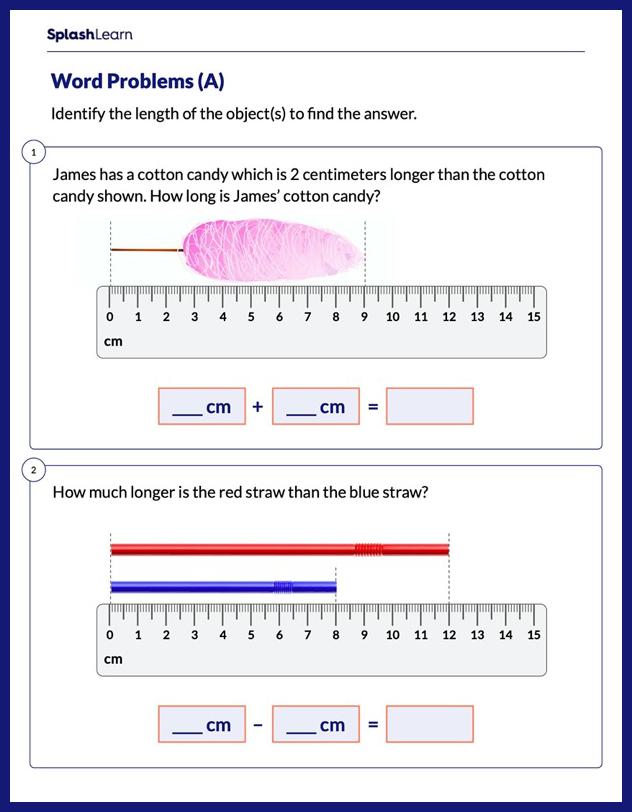What is Linear Measurement?
The linear measurement is the distance between the two given points or objects. Thus, we can define length as:
“Total gap measured between the leftmost and rightmost end of an object in the mentioned system of units.”
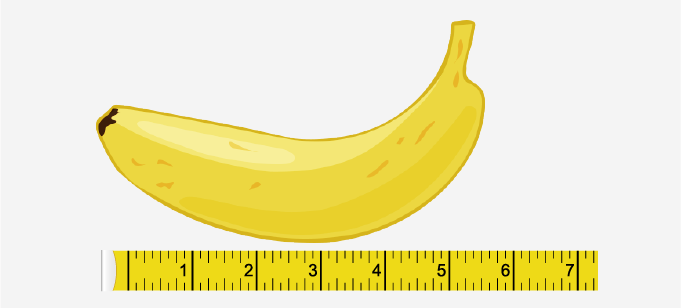
Measuring the length of a banana using tape. The length approximates to 5 inches.
Similarly, “height” is the linear measurement between the top and bottom of an object. For example, the height of the cone and a ladder as shown in the image.
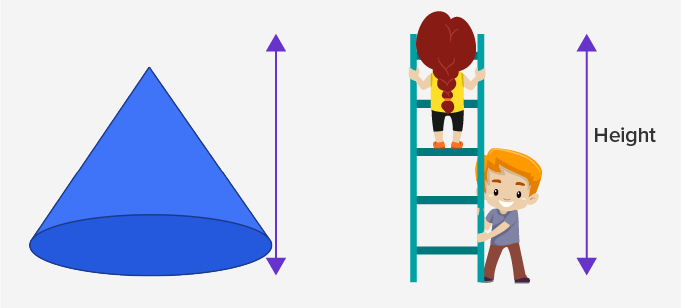
The height of the object is the distance between the top and the bottom.
The basic tools used for linear measurement are:
- Ruler – The standard rulers generally measure 15 and 30 cm with markings in mm, cm on top and inches on the bottom.

Standard ruler with measurement markings in millimeter (mm), centimeter (cm) on top and inches on bottom.
- Measuring tape – The measuring tape is more commonly used to measure longer objects such as walls, pieces of fabric and tiles. A measuring tape has metric markings and U.S. customary markings.
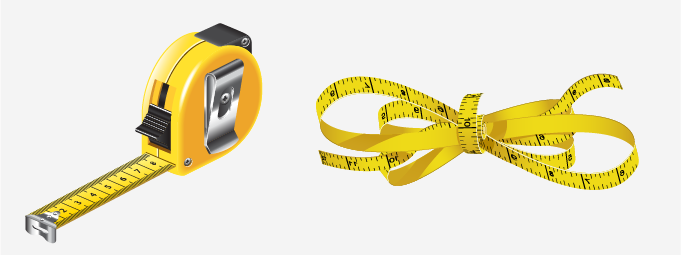
Pocket measuring tape with a metal strip and foldable measuring tape.
The markings on the tape and ruler are in the metric and customary system. The next section lists the different units of measurement for length and height.
Recommended Games
Units of Linear Measurement
| U.S. Customary Units | International System / Metric Units |
| Inches – in Foot – ft Yards – yd Miles – mile | Millimeters – mm Centimeters – cm Meters – m Kilometers – km |
Using instruments like a ruler and tape, children can measure surrounding objects such as pencil, shoe, a remote, toy car, and spoon. The example below illustrates the placement of a ruler against a screwdriver to measure its length.
To measure the length, place the object and ruler with the tip at the “0”. Mark the number at the end of the object to measure the total length.
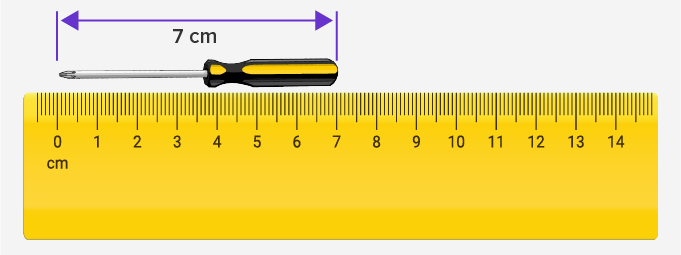
Measuring an object using a ruler.
Application
The concept of measurement is the primary step towards quantitative analysis. Kids learn to gather the numbers in terms of measurable quantities such as length, breadth, and height. The knowledge of physical dimensions of objects is used in learning geometry, drawing scalable maps, architecture, and estimating unknown quantities for shapes with the help of formulas.
| Fun Facts 1. In the early days, the length of body parts became the basis for acceptable measurements. 2. As per the orders of King Edward II of England, one inch equaled to placing 3 grains of barley end-to-end lengthwise. 3. The foot length of the statue of Cossutius in Rome measured 30.49 cm, approximately 1 foot. 4. Romans used the brass measuring rods in the 16th century for architectural and construction purposes. |
Related Math Vocabulary
- Length
- Tools of linear measurement
- Imperial Metrics
- SI Metrics
- Unit conversion
Recommended Worksheets
Practice Problems
Linear Measurement1 Which of the following attributes of an object CANNOT be measured using a measuring tape?Length Breadth Height Weight CorrectIncorrect Correct answer is: Weight Length, Breadth, and Height are the attributes of an object that can be measured by applying the rule of calculating the distance between two points. The weight of an object can only be measured using tools such as a balance scale. 2 Which of the following could be the best estimate for the length of a colored pencil?6 miles 6 inches 6 feet 6 yards CorrectIncorrect Correct answer is: 6 inches A pencil is a small object. The best possible estimate can only be 6 inches because the other given options are significantly bigger lengths compared to the length of a colored pencil. 3 Which of the following objects can be used as a tool for linear measurement?Balance Scale Thermometer Rular Clock CorrectIncorrect Correct answer is: Rular Linear measurement comes under the branch of mathematics that deals with the measurement of lengths. Out of the given options, only a ruler can be used to measure the length of an object. 4 Which of these is a linear measurement?9 feet 9 ounces 9 pint 9 tons CorrectIncorrect Correct answer is: 9 feet In the given options, feet is the only measuring unit of length. Ounces and pints are for volume, whereas ton is a unit used to measure the weight of an object. |
Frequently Asked Questions
What tools are used for linear measurement?
Some of the tools used for linear measurement are ruler, yardstick, meter stick, tape measure, caliper, odometer, etc.
What are some units of linear measurement?
In the US customary system, the units of linear measurement are inches, feet, and yards. In the metric system, the units are centimeters, decimeters, and meters.
What is the method for determining the linear measure?
For taking a linear measurement, align one end of the object with the zero on the tool you are using. Then make a note of the mark on the measurement tool where the other end of the object aligns with. For example, if using an inch ruler to measure the length of a ribbon, align one end of the ribbon with the zero and then see the point on the ruler at which the other end of the ribbon meets.
What is a linear foot?
A linear foot is a measurement of length that is 12 inches long. It is measured in a single line. It is different from square footage which is used to measure the area of space.





















